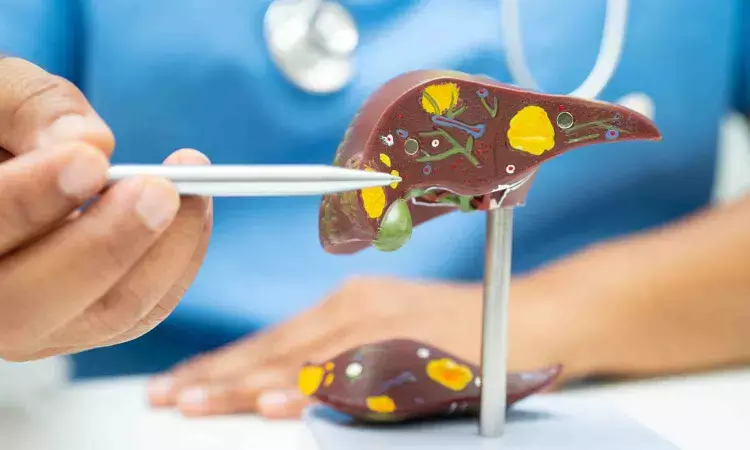- Home
- Medical news & Guidelines
- Anesthesiology
- Cardiology and CTVS
- Critical Care
- Dentistry
- Dermatology
- Diabetes and Endocrinology
- ENT
- Gastroenterology
- Medicine
- Nephrology
- Neurology
- Obstretics-Gynaecology
- Oncology
- Ophthalmology
- Orthopaedics
- Pediatrics-Neonatology
- Psychiatry
- Pulmonology
- Radiology
- Surgery
- Urology
- Laboratory Medicine
- Diet
- Nursing
- Paramedical
- Physiotherapy
- Health news
- Fact Check
- Bone Health Fact Check
- Brain Health Fact Check
- Cancer Related Fact Check
- Child Care Fact Check
- Dental and oral health fact check
- Diabetes and metabolic health fact check
- Diet and Nutrition Fact Check
- Eye and ENT Care Fact Check
- Fitness fact check
- Gut health fact check
- Heart health fact check
- Kidney health fact check
- Medical education fact check
- Men's health fact check
- Respiratory fact check
- Skin and hair care fact check
- Vaccine and Immunization fact check
- Women's health fact check
- AYUSH
- State News
- Andaman and Nicobar Islands
- Andhra Pradesh
- Arunachal Pradesh
- Assam
- Bihar
- Chandigarh
- Chattisgarh
- Dadra and Nagar Haveli
- Daman and Diu
- Delhi
- Goa
- Gujarat
- Haryana
- Himachal Pradesh
- Jammu & Kashmir
- Jharkhand
- Karnataka
- Kerala
- Ladakh
- Lakshadweep
- Madhya Pradesh
- Maharashtra
- Manipur
- Meghalaya
- Mizoram
- Nagaland
- Odisha
- Puducherry
- Punjab
- Rajasthan
- Sikkim
- Tamil Nadu
- Telangana
- Tripura
- Uttar Pradesh
- Uttrakhand
- West Bengal
- Medical Education
- Industry
Methylglyoxal Independently Contributes to Liver Fibrosis in Obesity: Study

A new study has determined that increased concentrations of methylglyoxal (MGO), a potent reactive byproduct of glucose metabolism, can independently cause the onset of liver fibrosis among obese individuals. The finding is consistent with mounting evidence indicating that MGO and similar compounds not only initiate inflammation and produce deleterious advanced glycation end products (AGEs), but also are key players in liver injury involved with metabolic dysfunction-associated steatotic liver disease (MASLD).
The research, which quantified plasma concentrations of MGO, glyoxal (GO), and 3-deoxyglucosone (3-DG), had significant correlations with severity of liver fibrosis, even in non-type 2 diabetic subjects. The study was conducted by Oluwatomisono I. and colleagues published in the journal of Diabetes Obesity and Metabolism.
264 severely obese subjects undergoing bariatric surgery were studied as part of the BARIA cohort. Among the participants, 22% had type 2 diabetes, 77% were female, the median age was 47 years (IQR: 39–54 years), and the median BMI was 39 kg/m² (IQR: 36–41 kg/m²). Plasma concentrations of MGO, GO, and 3-DG were measured in a research setting using ultra-high-performance liquid chromatography tandem mass spectrometry (UPLC-MS/MS). Liver fibrosis was assessed by two different approaches: the non-invasive Fibrosis-4 (FIB-4) Index and direct liver histology score from biopsies.
Key findings
• Plasma MGO levels were significantly increased in people with type 2 diabetes (median: 288 nmol/L; IQR: 257–334 nmol/L) versus those without diabetes (median: 238 nmol/L; IQR: 212–279 nmol/L). MGO also rose higher in men (267 nmol/L; IQR: 236–301 nmol/L) than in women (245 nmol/L; IQR: 214–288 nmol/L).
• The same tendencies were seen for GO and 3-DG, suggesting that dicarbonyl stress is greater in men and people with diabetes.
Plasma concentrations of MGO, GO, and 3-DG were positively correlated with higher scores for FIB-4 Index, a very high correlation with liver fibrosis.
• That is, correlation coefficients (rho) were 0.21 for MGO, 0.29 for GO, and 0.25 for 3-DG, and all were statistically significant (p < 0.05).
• In multiple linear regression models controlling for several potential confounders (age, sex, BMI, smoking status, alcohol intake, hypertension, insulin resistance, HbA1c, and fasting glucose), the relationship between MGO and the FIB-4 Index continued to hold strong.
This study highlights dicarbonyl stress especially from methylglyoxal as a significant and independent contributor to liver fibrosis in obese individuals, even in the absence of diabetes.
Reference:
Akinrimisi, O. I., Koning, M., Scheijen, J. L. J. M., Meijnikman, A. S., Sindhunata, D. P., Bruin, S., van de Laar, A., Franken, R., Acherman, Y., Gerdes, V. E. A., Nieuwdorp, M., Schalkwijk, C. G., & Hanssen, N. M. J. (2025). Higher plasma dicarbonyl levels are associated with liver fibrosis in obese individuals. Diabetes, Obesity & Metabolism. https://doi.org/10.1111/dom.16643
Dr Riya Dave has completed dentistry from Gujarat University in 2022. She is a dentist and accomplished medical and scientific writer known for her commitment to bridging the gap between clinical expertise and accessible healthcare information. She has been actively involved in writing blogs related to health and wellness.
Dr Kamal Kant Kohli-MBBS, DTCD- a chest specialist with more than 30 years of practice and a flair for writing clinical articles, Dr Kamal Kant Kohli joined Medical Dialogues as a Chief Editor of Medical News. Besides writing articles, as an editor, he proofreads and verifies all the medical content published on Medical Dialogues including those coming from journals, studies,medical conferences,guidelines etc. Email: drkohli@medicaldialogues.in. Contact no. 011-43720751


